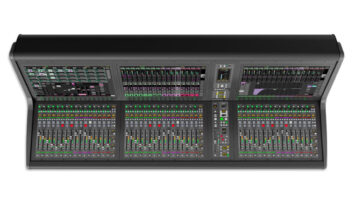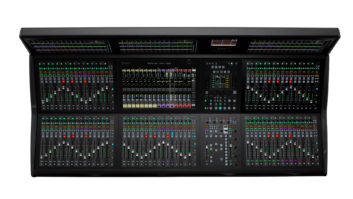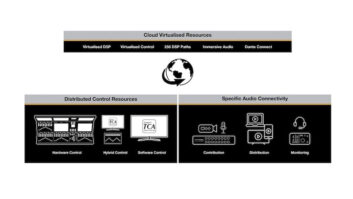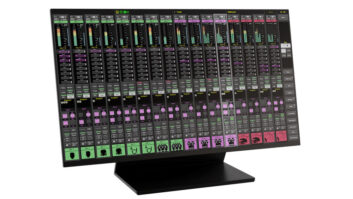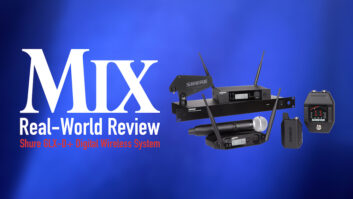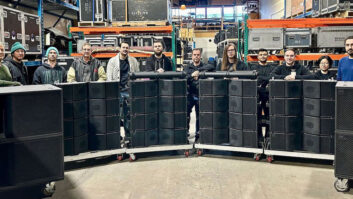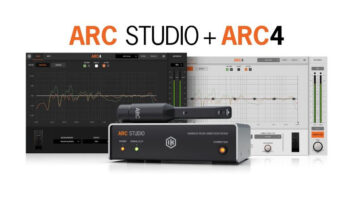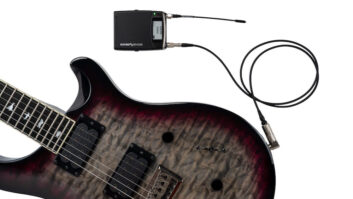Ah, yes, the rock ‘n’ roll lifestyle. Hey, Daron Malakian, what was it like when you and System of a Down went into the studio to record your sophomore album? “I don’t remember it too much,” he admits, laughing. “We’re not too crazy, but each person has their moments. We like to partake in the marijuana. So, there are a lot of bongs and pipes around. A lot of incense and sage. But by no means was it hippie. Well, maybe on Serj’s part, but not with me. I like to put up a lot of skeletons and skulls, because I collect a lot of stuff that’s on the darker side. I like to create that vibe in the studio. I think each person’s personality sticks out in the studio, and they make themselves at home. That’s pretty much what makes our band — four characters — and each person brings their own thing. Serj brings the hippie vibe, I bring the devil,” he adds, laughing again.
Before System of a Down — Malakian on guitars, singer Serj Tankian, bassist Shavo Odadjian and drummer John Dolmayan — even hit the studio to record Toxicity, the band spent some deep time in rehearsal and pre-production. According to engineer Dave Schiffman, that level of preparation helped the band when they hit the doors at Cello Studios in Los Angeles. “They really knew what they wanted, which was good in that respect, in terms of the arrangements,” he says. “They had had some issues with the way their previous record had sounded. I think part of it was that it was their first record and it was all a very new experience. This time, they wanted to have more of a say in how things were put together and what things sounded like, which was great. I always applaud a band when they have a definite idea of what they want to sound like and what they want out of something, because I think when you have a goal, it makes it easier.”
Odadjian points out that it was easier for the band because they knew what was going on this time around. “It wasn’t like the first time around; we were all prepared. Serj brought in five songs, I brought in four, and Daron brought a lot in. We all knew where we were going, and then when we went in the studio, we didn’t say, ‘How do we record?’ We knew how to record.” Also, the band knew they had to buff up their sound for this release. “We knew we had to do more this time to make it thicker, and that’s why the album sounds more 3-D,” Odadjian adds.
Malakian, as the band’s main songwriter, concurs. “I definitely wanted a more eclectic vibe on this record,” he says. “I like to look at the record as a big piece of work instead of individual songs. As a writer, I knew that Serj was more in the mode of singing, so I wrote songs that had some choruses that were more melodic.”
Thirty songs down the road, the band felt as if they were ready to get into the studio. Malakian, who got production credit with Rick Rubin, had some definite ideas of what he wanted in a room. He listened to The Cramps’ album Date With Elvis, discovered it was recorded at the part of Ocean Way Studios that is now Cello Studios, and knew that was the room for them. “The Cramps aren’t necessarily known for having a big sound, and that’s the biggest-sounding Cramps record. So I thought that had to be the room,” he explains. “I wanted the drums to sound a lot bigger, and I wanted a bigger, bulkier-sounding record.”
Rubin, who produced the band’s debut, was clear on his goals for the record, too: “Helping focus the arrangements of the songs, help get the best performances, both bandwise and vocally, and really spending time creating an environment where the band is comfortable to create and have the confidence to work on lots of songs and not feel rushed, and not feel like if they wrote 10 songs, they had to go into the studio tomorrow,” he says. “Feeling like they can really rediscover who they are musically.”
It’s not that they were drifting from that, Rubin adds, it had just been a long time since they had been in the studio. “And there was pressure from outside sources, people saying, ‘Hey, we’ve got to get this done.’ From day one, we said the most important thing was that the record be the greatest it can be. It didn’t take us long to record the album, it just took a long time to write it. But I think it shows. I think there’s a depth on this record that not many modern records — certainly not many heavy records — have. I think it came from that — from putting the work in and the work paying off.”
Engineer Schiffman and the band spent three days getting sounds, working intensively on miking the drum kit and finding a bass rig that measured up to Malakian’s expectations. “We probably went through 14 basses and like seven or eight different heads, and five or six different cabinets,” Schiffman reports. “They really wanted to get that big, sub-y bass that you hear a lot on nu-metal records. At the same time, they wanted it to punch out in the midrange, so it was kind of a tricky thing, because it seems when you have a bass that punches out midrange, you mask a bit of your sub.” The eventual winning combination included a 1962 Gibson Firebird bass, a vintage Ampeg head for the main sound through an 8×10 cabinet, and a Trace Elliot for the midrange and gnarl through a 4×10 cabinet. “We didn’t combine them together,” explains Schiffman. “I was running everything to separate tracks, so we always had balancing options. I was running those two cabinets and a DI.” The cabinets were miked with a Neumann FET 47 and Electro-Voice RE20 going through a pair of LA-2As. The DI was compressed with a Distressor.
Dolmayan’s kit was a bit of a challenge to mike. “I tried to mike John’s kit as tightly as possible, because it’s a very extensive kit,” Schiffman says. “He’s got five toms, these little chime cymbals dispersed all over the kit, two hi-hats — one that’s remote and one that he plays — four crashes and two rides, and some RotoToms. The kit is like 12 yards long; it’s huge. So, in order to keep it so that it was powerful, I wanted to have everything pretty tightly miked, except for something like the chimes that could cut through any place.” To capture it all, Schiffman spot-miked much of the kit, including the ride cymbals, where a Shure SM57 came in handy. For the balance of the cymbals, an AKG C-12 was used for the overheads, while a Sennheiser 421 and a FET 47 were used on the kick drum. Dolmayan’s snare was miked with a Sennheiser 441 on the bottom, and both a Shure 57 and an old AKG C-60 on top. “It’s a really cool thing to mix in with the 57,” he says of the C-60. “You get the crack from the 57, and the C-60 tends to fill it out a little bit. The only downside was when John would bash his hi-hat, you get a little bleed into the snare mic. I blend all of those to one track. I almost always had the underside mic on, because that makes the snare feel a little taller.” Sennheiser 421s were used on the toms.
Recording Malakian’s guitar tracks was relatively straight-ahead, because he doesn’t like to play through effects pedals. His signal went through a combination of Marshall and Mesa Boogie cabinets and heads. “The Mesa gave us the teeth, and the Marshall gave us the body,” Schiffman explains. “The two together made a big, full, nice sound.” He put a 57 and an 87 on each cabinet, taking care that they were phased correctly, and then ran them through a pair of black-faced 1176s. Though the actual signal path was simple, some of the parts were not: Malakian layered them extensively. “I would layer a muddy guitar over a rock guitar over a real heavy metal guitar,” he explains. “I would play the song about 50 times until we got each layer right. Then there are soft parts of the songs where I put a lot of different acoustics over each other. Every time you hear the album, you’ll hear something a little different hidden in there with the guitars. Even I hear stuff that I don’t remember doing.”
One of the major changes in System of a Down, which Rubin noticed as soon as they got into the studio, was that Tankian was singing as much as he was screaming. “On the first album, it’s mostly screaming, and on this album, there’s lots of screaming and really great world-class singing,” Rubin says. “That’s also something you don’t hear very often on a heavy record. He’s the man of a thousand voices. He can really make a lot of funny sounds. He really feels it; he’s a real emotional and passionate singer.”
To capture Tankian’s vocals, Schiffman used a Shure SM7 for the more aggressive tracks. “It can withstand a lot of high SPLs, and it doesn’t fold or buckle,” he says. “It’s a pretty warm mic.” For the more delicate vocals, he used an AKG C-12. Tankian also had a Chaos Pad, a device that changes the waveform of the signal going through it, to use during tracking. “We’d plug a 57 into that and he would do weird background things,” Schiffman says. “A lot of [the background noise] is his voice going through the Chaos Pad.”
Adding another interesting layer to the System sound was percussionist Arto Tuncboyaciyan. “He came in and played his body and his zipper and his pockets,” Rubin explains. “So he played a lot of the interesting additional sounds, besides the ones both Daron and Serj played. Arto took it to a new acoustic, natural level of new sounds that we haven’t heard before.” The Arto tracks were used intermittently during bridges, solos or during different musical passages, Rubin explains. “His tracks will come in and take it to a new place. I think it makes it more interesting to listen to; you’re getting pulled into hearing different stuff that you don’t normally hear. There’s also the element of surprise. You’re expecting to hear a certain thing from System of a Down, and then, all of a sudden, you hear percussion or an odd mandolin or some weird thing comes in, and it expands your vision of the band and makes it bigger than just four people rocking out. It widened the landscape of the thing.”
The Arto tracks were recorded directly into Pro Tools, as were Tankian’s vocals. “If you’re singing a lot over a long period of time, Pro Tools makes it really easy to comp between different takes and to have everything right there and not have to wait to rewind. You just get a lot done that way,” Rubin says.
However, the majority of the album was recorded on an Ampex ATR-24 24-track analog machine, with some punches and overdubs done on a Studer A800. “The ATRs don’t punch fast enough for this kind of stuff,” Schiffman says. “A lot of their songs were at 140 bpms, and to punch 16th notes at 140 on this machine was pretty impossible. The A800 kind of saved our butts on that.”
As for mic pre’s, Schiffman didn’t feel that it was necessary to go outside of the 1073s found in the Neve 8038 console. “It sounded great, and every time I tried other mic pre’s, I found myself going back to those, because they do such great things, especially for rock ‘n’ roll,” he reports. “The console [a Neve 8038] in there is just phenomenal, and we were hard-pressed to find something better than the console to run it through. It’s a real simple chain, and those tape machines [Ampex ATR-124s] are phenomenal. It was hard to beat that. I felt like if I started adding different EQs and all that other stuff, it was like I was convoluting it a little bit. So it was a pretty organic chain.”
Once the recording of the 32 songs — yes, they did 32 songs top to bottom — was completed, mixer Andy Wallace came into the picture. “The stuff on tape was pretty good,” Wallace reports. “I really liked the fact that there’s so much variety in the music. It’s refreshing, in fact. You can’t just set it, forget it and mix all the songs. I don’t even do that anyway, because even on groups where there is a lot of similarity between songs, each song has its own requirements. It’s not just a matter of getting a sound on the instruments; it’s a matter of weaving it all in and out and making it work right, and that’s different on every song.” He ended up mixing more than 20 songs, 15 of which made the final album sequence.
Wallace, Rubin and the band had some discussions regarding the use of the sonic under-textures that helped define the sound of the album. “There was a certain amount of debate about how much that should or should not be in the record,” Wallace reports. “But I think everybody came to a similar place on it, and I think they’re all happy with it. I think it gives it a little extra character thing that it might not have otherwise.”
The record was mixed at The Enterprise in Burbank, Calif., on an SSL G-Plus. From Wallace’s seat, this album was a straightforward affair. “There was no song that was particularly problematic for any reason, either the material or an equipment problem or a band problem,” he says. “Considering that they’ve got a pretty solid fan base and they are a very exciting live band, I would expect that this album would stack up pretty well with what’s out there. You never know until the cash registers start going, but I expect it’s going to be pretty well received. I think it’s an interesting album, so it doesn’t just sound like any other record. It has its own character and it’s a strong character. And even though there’s a lot of variety between songs, there’s still some underlying unity there that you definitely feel it’s the same band. The songs sound like they belong together to me. That is just a matter of the band having its own character and it coming through.”
